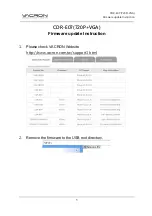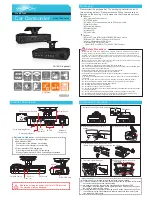
55
www.kodak.com/go/support
Using your camera with a Wi-Fi wireless network
Passphrase—
A text string used for WPA security on a Wi-Fi wireless network. A
passphrase may contain up to 31 alphanumeric characters, including spaces and other
special characters.
NOTE: A passphrase used for WPA security is not the same as a WEP key, nor is it the same as a passphrase
commonly found in router software that is used to generate a WEP key.
Router—
An access point (AP) or hub that sends data from one local area network
(LAN) or wide area network (WAN) to another. A router monitors and controls data
flow and sends information using the most efficient route based on traffic load, line
costs, speed, bad connections, etc.
SSID—
Service Set Identifier: also referred to as a network name, since it is essentially
a name that identifies a wireless network. The identifier is attached to the wireless
local area network (WLAN) and acts as an identifier when a device tries to connect to
the system. A device will not be permitted to join the network unless it can provide
the unique SSID. An SSID can be broadcast by the network router, allowing devices to
detect it as an available network. An SSID does not supply security to the network.
SSL—
Secure Sockets Layer: a commonly used encryption scheme used by many
online retail and banking sites to protect the financial integrity of transactions.
TCP/IP—
The underlying technology behind the Internet and communications
between computers in a network.
URL—
Uniform Resource Locator: also referred to as a Web address, since it
identifies the location of a file or resource on the Web. For example, the URL for the
Eastman Kodak Company Web site is http://www.kodak.com.
WEP—
Wired Equivalent Privacy: basic wireless security provided by Wi-Fi. In some
instances, WEP may be all a home or small-business user needs to protect wireless
data. WEP is available in 40-bit (also called 64-bit), or in 108-bit (also called 128-bit)
encryption modes. As 108-bit encryption provides a longer algorithm that takes
longer to decode, it can provide better security than basic 40-bit (64-bit) encryption.
















































